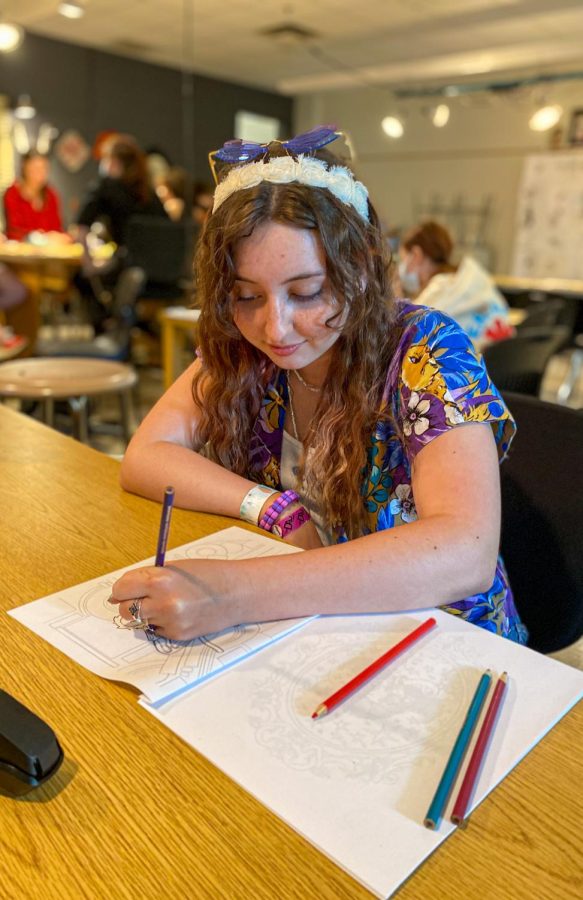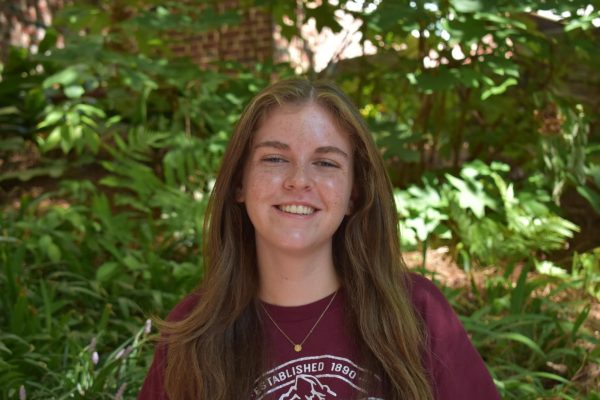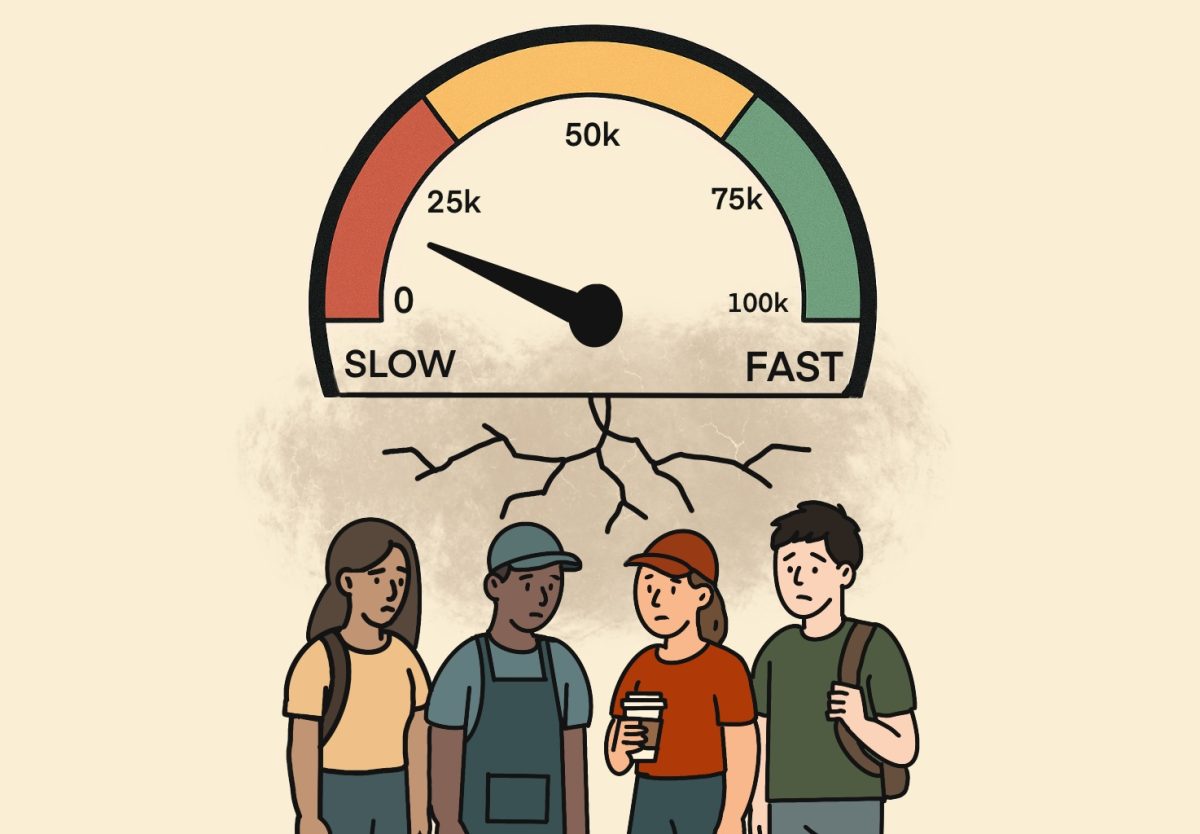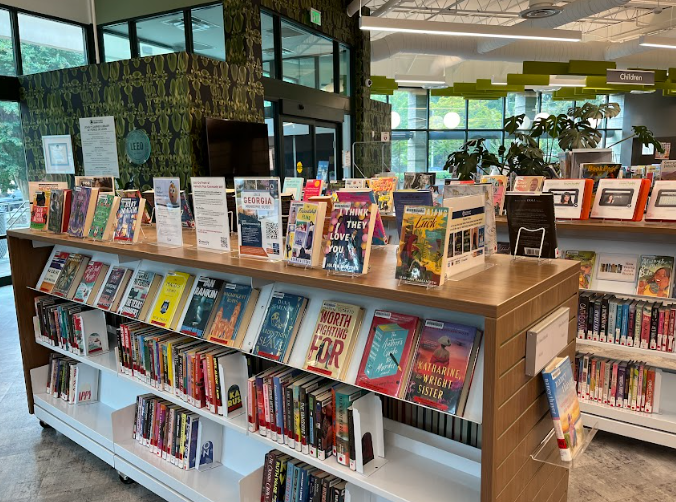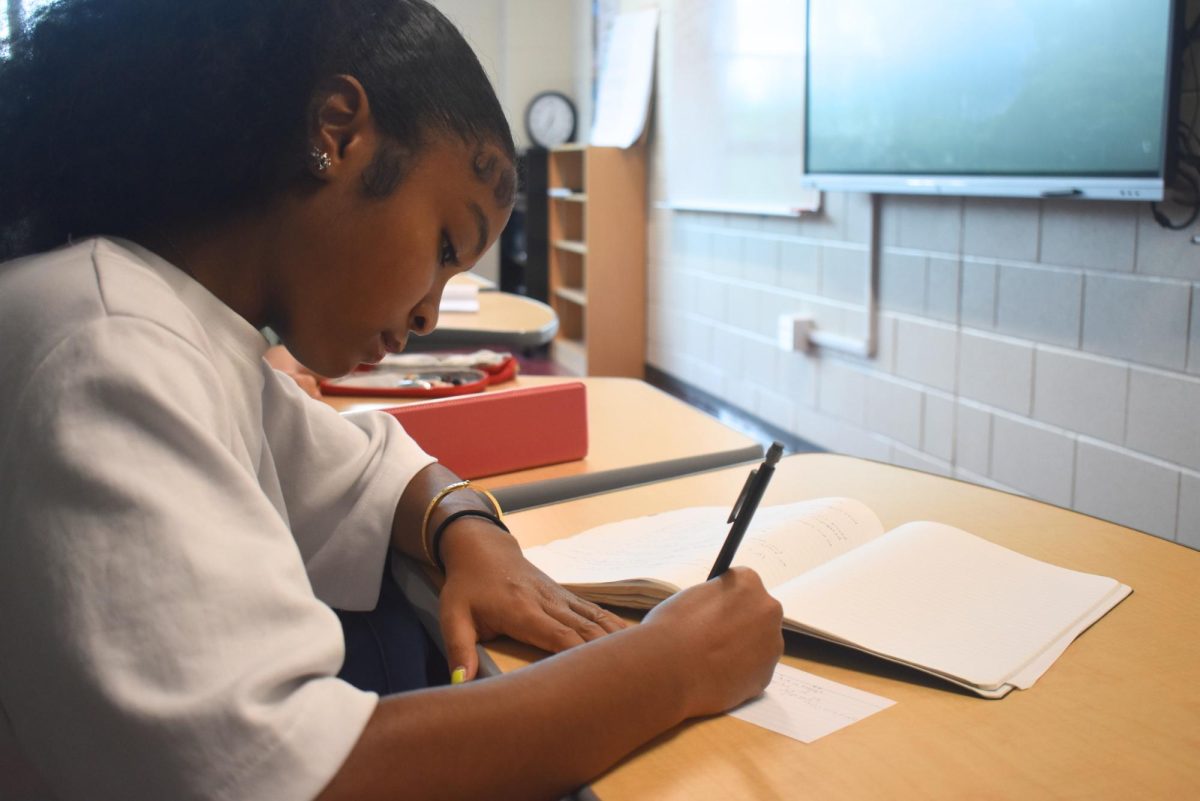Printing of Coloring Book presents opportunities for Art Club
After years of sketching, the art club finishes their first printing of a coloring book, giving students the opportunity to display their artwork. President of the art club, senior Aisling Mahony, colors in one of her own designs she contributed to the coloring book.
November 4, 2022
What started for most as outlines in their sketchbooks is now being brought to life with the printing of the Art Club’s first coloring book.
“We’ve been playing with [the coloring book] for probably five years,” John Brandhorst, art teacher and club sponsor, said. “It kind of arches up and we get a certain amount of production, and then, people get busy and that gets to be more difficult. So, every year it gets a little bit closer.”
The inspiration for the coloring book comes from the philosophy of therapeutic art, the usage of visual art to engage during therapy.
“Coloring books are a part of everyone’s life at one point or another,” Brandhorst said. “There’s a group called ColorATL that did a spectacular job of curating artists from across the city of emerging and established artists. William Massey, who is a central connector in the arts scene in Atlanta, got to publish a book with some other people and was able to get it into the hands of folks who are in rehab. It’s been proven again and again that there’s a huge therapeutic effect from coloring.”
Senior Aisling Mahony, art club president, has overseen the building of the coloring book, encouraging both individuality and teamwork in the process.
“I think the coloring book is a really good test of balance of individualism and teamwork because you have the page to yourself, but the whole book is completed together,” Mahony said. “Your spirit is your part of it, but you still get to see everyone else’s.”
The opportunity to have students’ artwork printed for others to appreciate gives the students creating the pages a chance to show others their creativity and see how they interact with the artwork.
“Last year, [the coloring book] was a part of the AP art class to make a piece for it,” Mahony said. “This year, it’s optional but really encouraged. So, it’s been exciting. The big thing about it is that it’s an opportunity to be officially published as an artist, and that is a huge deal.”
Midtown graduate Ashe Lemon continues to help out with the Art Club. Her 12 years in Girl Scouts led her to printing the coloring book to complete her Gold Award, a focused service project Girl Scout Seniors and Ambassadors can achieve. Lemon has played a role in designing and organizing the book.
“It’s more of a worldly project than about myself,” Lemon said. “I’m trying to get more of an ‘oh yes, this makes me feel comfortable, [or] I don’t like that,’ open conversation because the more people that relate, the more that it will reach.”
Mahony has goals and hopes to have more thematic pages for future printings of the coloring book.
“After its first publication, we’re hoping to get more specific with it because as we’re getting more and more into Art Club; we’re finding more and more niche interest groups,” Mahony said. “I really like drawing bones; I think they’re really fascinating. I found, through Art Club, four other kids who also really love drawing skeletons and skulls. So, Brandhorst and I are looking into how we can do more concentrated, thematic coloring books.”
Lemon’s goal is for the coloring book to continue beyond its first printing and after the completion of her Gold Award.
“The objective of the Gold Award project is for you to step away from your project and for it to still keep going,” Lemon said. “It wants you to be able to do something else. This is something you started, how can it move on without you?”
Brandhorst also has targets for the future of the coloring book for the Art Club and the art program at Midtown.
“This is something that I hope creates a cynical, ongoing, collaborative, creative, community-based example of what I call aesthetic leadership,” Brandhorst said. “We are literally the visionaries. I think that it opens a door to larger capacities for collaboration. Especially now that we’re a STEAM (science, technology, engineering, arts and mathematics) school and a STEAM cluster. I want to create a program that is unavoidable in the sense of curiosity about learning and doing.”

